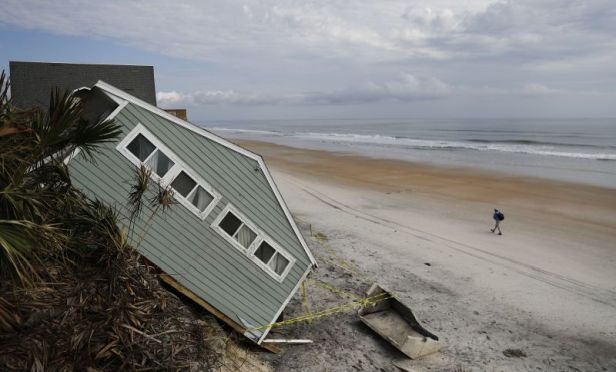 In this Sept. 15, 2017, photo, a house rests on the beach after collapsing off a cliff from Hurricane Irma in Vilano Beach, Fla. The hurricanes that battered Texas and Florida likely spawned the worst disaster-created housing crunch since Hurricane Katrina left hundreds of thousands of Gulf Coast residents without homes more than a decade ago. (AP Photo/David Goldman)
In this Sept. 15, 2017, photo, a house rests on the beach after collapsing off a cliff from Hurricane Irma in Vilano Beach, Fla. The hurricanes that battered Texas and Florida likely spawned the worst disaster-created housing crunch since Hurricane Katrina left hundreds of thousands of Gulf Coast residents without homes more than a decade ago. (AP Photo/David Goldman)
Given the back-to-back hurricanes hitting the United States lately, the number of business recovery plans activated recently has made it a busy time.
Many businesses in Texas, Florida and other places faced the challenge of running their businesses while staring down an evacuation and dealing with other important matters, such as ensuring the safety of family members and personal property.
Recommended For You
Want to continue reading?
Become a Free PropertyCasualty360 Digital Reader
Your access to unlimited PropertyCasualty360 content isn’t changing.
Once you are an ALM digital member, you’ll receive:
- Breaking insurance news and analysis, on-site and via our newsletters and custom alerts
- Weekly Insurance Speak podcast featuring exclusive interviews with industry leaders
- Educational webcasts, white papers, and ebooks from industry thought leaders
- Critical converage of the employee benefits and financial advisory markets on our other ALM sites, BenefitsPRO and ThinkAdvisor
Already have an account? Sign In Now
© 2025 ALM Global, LLC, All Rights Reserved. Request academic re-use from www.copyright.com. All other uses, submit a request to [email protected]. For more information visit Asset & Logo Licensing.








